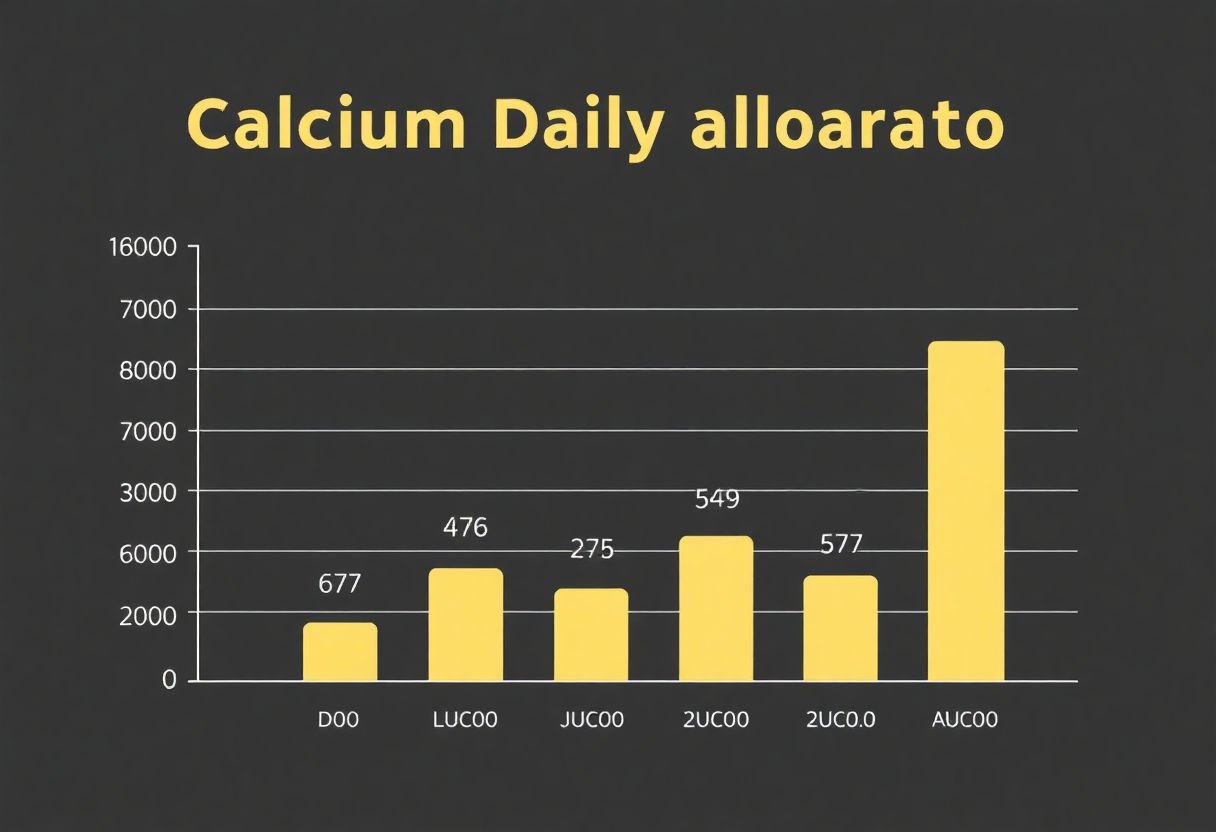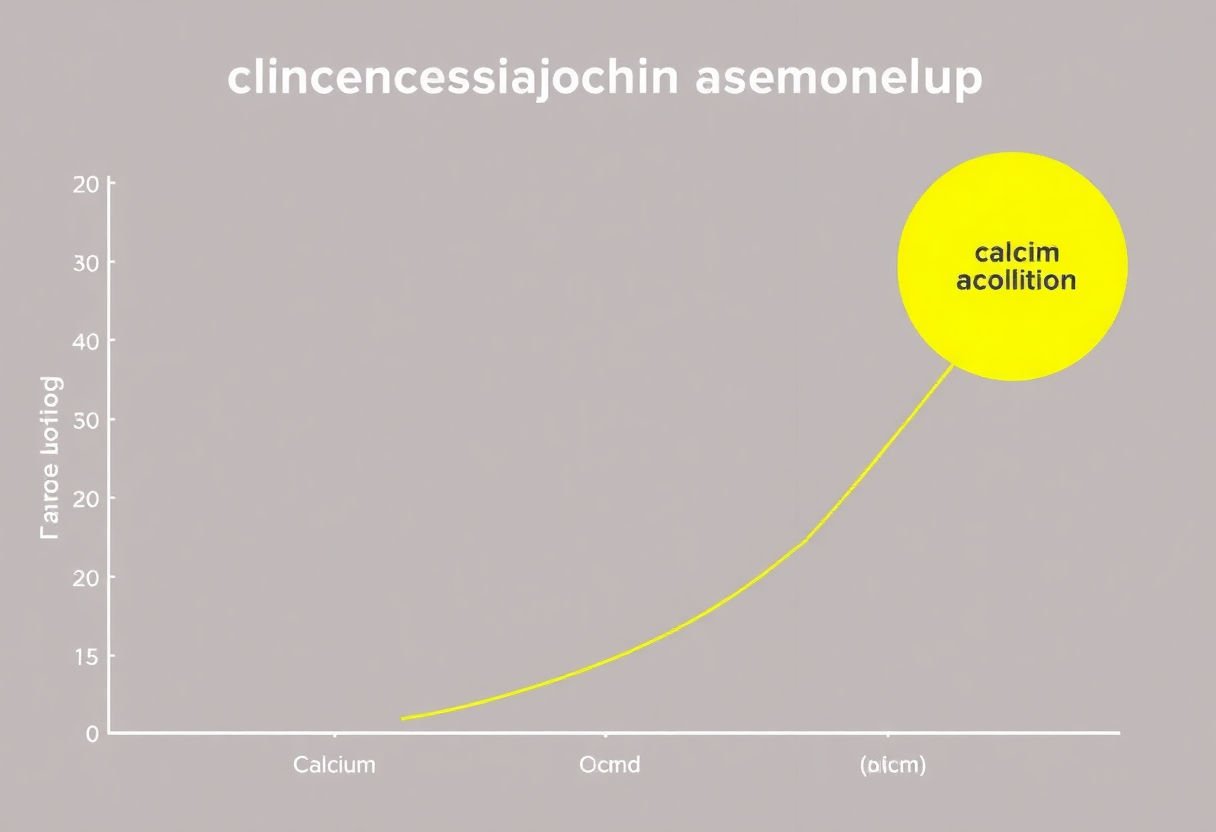Calcium plays a crucial role in nurturing healthy bone development in children, serving as a foundational element for their growing bodies. Understanding the importance of calcium is vital for ensuring that kids develop strong bones. This guide delves into the essential aspects of calcium, exploring its role in child development, daily intake recommendations, and natural sources. We’ll also examine the relationship between calcium and vitamin D, recognize deficiency symptoms, and uncover strategies for incorporating these essential nutrients into a child’s diet. Prepare to enhance your knowledge on fostering optimal bone health in your children.
Key Takeaways
- Calcium is essential for children’s bone development and overall health, making it crucial to ensure adequate intake.
- Incorporating calcium-rich foods into a child’s diet, such as dairy products, fortified foods, and green leafy vegetables, can significantly support bone health.
- Understanding the role of vitamin D can enhance calcium absorption, highlighting their combined importance for optimal bone strength.
- Monitor children for signs of calcium deficiency to address potential health issues early and effectively.
- Special dietary needs, such as lactose intolerance or vegetarianism, require tailored approaches to meet children’s calcium requirements.
The Role of Calcium in Child Development

Calcium is a fundamental mineral necessary for proper growth and development in children, primarily influencing the formation and maintenance of healthy bones and teeth. During childhood, the body actively builds bone mass, laying the foundation for future bone health. An adequate supply of calcium is essential for this process, reducing the risk of bone-related issues like osteoporosis later in life.
The development of the skeletal system relies heavily on calcium, which accounts for nearly 99% of total body calcium being stored in the bones and teeth. This storage acts as a reservoir to maintain calcium balance in the bloodstream, critical for numerous physiological functions.
Calcium’s role extends beyond bone health. It is crucial for muscle function, nerve transmission, and hormonal secretion. These functions ensure that a child’s body remains well-coordinated and capable of growth and activity. Additionally, during critical periods such as adolescence, when growth spurts occur, the demand for calcium surges, underscoring the importance of a diet rich in this mineral.
Parents should ensure that children receive the recommended daily amount of calcium to support these developmental stages. Encouraging a diet that includes calcium-rich foods like milk, cheese, yogurt, and leafy greens is vital. For those who struggle with dairy, fortified alternatives provide a viable source of calcium, ensuring all children, regardless of dietary preferences or restrictions, receive sufficient calcium to support their development.
Recommended Daily Allowance of Calcium for Kids

Calcium is an essential nutrient for children, intricately linked to their growth and bone health. Ensuring the right amount of calcium intake during formative years supports the development of strong bones and teeth, and plays a crucial role in muscle function and nerve communication.
The recommended daily allowance (RDA) of calcium varies by age:
- Infants 0-6 months: 200 mg
- Infants 7-12 months: 260 mg
- Children 1-3 years: 700 mg
- Children 4-8 years: 1,000 mg
- Children 9-18 years: 1,300 mg
These guidelines underscore the importance of adjusting your child’s diet as they grow, to meet their evolving nutritional needs. Appropriately meeting these calcium intakes can effectively prevent deficiencies and contribute to peak bone mass later in life.
Parents and caregivers should prioritize sources rich in calcium, such as dairy products like milk, cheese, and yogurt, alongside fortified plant-based milk alternatives for those with dietary restrictions. Incorporating these into daily meals ensures children receive a sufficient amount to support their bone and overall health.
For children with specific dietary needs or those at risk of not getting enough calcium through diet alone, consulting with a healthcare professional about supplements can be beneficial. However, it’s paramount to approach supplements carefully, as excessive calcium intake may lead to adverse health effects.
As the foundation for a lifetime of healthy bones and active living, understanding and implementing adequate calcium intake is key to supporting your child’s growth trajectory and future well-being.
Sources of Calcium: Foods and Supplements
Calcium is an essential mineral for children, contributing to the development of strong, healthy bones. Naturally, diet plays a pivotal role in ensuring adequate calcium intake. Dairy products such as milk, cheese, and yogurt are traditional staples due to their high calcium content. Nonetheless, numerous non-dairy sources are equally beneficial. Leafy greens like kale, broccoli, and spinach, along with nuts such as almonds, offer substantial calcium doses. Some fish, including salmon and sardines, are also noteworthy for their calcium levels, especially when consumed with bones.
In today’s market, fortified foods are increasingly popular for enhancing calcium intake. Products such as fortified orange juice, cereals, and plant-based milk alternatives, including soy, almond, and oat milk, provide an excellent alternative for those who are lactose intolerant or prefer a vegan diet.
While diverse food sources should ideally meet children’s calcium needs, sometimes supplements are necessary. These are particularly useful for children with restrictive diets or specific health conditions that impede adequate nutritional intake. When considering supplements, it’s essential to consult with healthcare professionals to choose the appropriate dosage and type, whether calcium carbonate or calcium citrate.
Incorporating these varied sources into daily meals can effectively enhance calcium consumption, ensuring children receive the required nutrients for optimal bone health. As always, a balanced and varied diet is integral to maintaining overall health and promoting proper development in growing children.
The Link Between Calcium, Vitamin D, and Bone Health
Calcium and vitamin D engage in an essential partnership to enhance bone health, particularly during childhood. Calcium, a crucial mineral, builds and solidifies bones, while vitamin D facilitates its absorption in the intestines. Without adequate vitamin D, calcium absorption efficiency can drop significantly, potentially leading to inadequate bone mineralization.
Vitamin D acts as a critical regulator for calcium balance in the body. It not only aids in absorbing calcium from the diet but also helps maintain serum calcium and phosphate concentrations, which are vital for normal bone mineralization. The synergy between calcium and vitamin D can be compared to a lock and key mechanism, where vitamin D unlocks the potential benefits of calcium.
For children, achieving an optimal calcium and vitamin D balance promotes robust bone growth and minimizes the risk of rickets, a condition characterized by softened bones. The recommended daily intake of vitamin D for children varies by age, but ensuring sufficient sunlight exposure and considering fortified foods can help meet these needs.
Key sources of vitamin D include:
- Sunlight: Encouraging outdoor playtime can naturally boost vitamin D levels.
- Diet: Incorporating foods such as fortified dairy products, eggs, and fatty fish can help maintain adequate levels.
- Supplements: In cases where dietary intake and sunlight exposure are insufficient, supplements may be recommended under medical guidance.
In summary, a holistic approach that combines adequate calcium intake with appropriate vitamin D levels is paramount in supporting children’s bone health, ensuring they develop strong and healthy bones.
Recognizing Calcium Deficiency Symptoms in Kids
Recognizing calcium deficiency symptoms in kids is crucial for maintaining their long-term health. Calcium deficiency can lead to significant developmental issues if not addressed promptly. Some common symptoms to watch for include:
-
Delayed Growth: Children with insufficient calcium levels might experience slower growth, impacting height and bone development.
-
Tooth Decay: Calcium is essential for strong teeth. An unexpected rise in cavities or tooth decay could indicate a deficiency.
-
Muscle Cramps and Weakness: Muscle spasms, cramps, or persistent muscle weakness may be signs that a child’s calcium needs are not being met.
-
Bone Pain or Fractures: Frequent complaints of bone pain or a propensity for fractures from minor falls could signal a lack in calcium.
-
Irritability and Lethargy: Behavioral changes such as increased irritability or lethargy might be linked to inadequate calcium levels.
It is also vital to understand that these symptoms might not appear immediately, making it essential to ensure regular calcium intake. Pediatricians emphasize that early detection can prevent long-term health issues, with interventions focusing on dietary adjustments and, when necessary, supplements. As quoted by many health professionals, “A proactive approach in boosting calcium intake can dramatically improve a child’s bone health outcomes.” Regular check-ups and consultations with healthcare providers can help ascertain calcium levels, ensuring prompt and effective care. By being vigilant about these symptoms, parents can better support their child’s developmental needs, securing a robust foundation for their future health.
Incorporating Calcium-Rich Foods into Your Child’s Diet

Introducing calcium-rich foods into your child’s diet can be both enjoyable and beneficial, ensuring they receive the nutrients essential for strong bones and overall health. Start by incorporating dairy products such as milk, yogurt, and cheese, which are excellent sources of calcium. Aim for three servings of dairy a day to meet the recommended intake.
For those who are lactose intolerant or follow a vegan diet, explore plant-based options. Almonds, sesame seeds, tofu, and fortified plant milks (such as almond, soy, or oat milk) are superb alternatives. Leafy greens like kale, broccoli, and bok choy are also calcium-rich choices, serving as great additions to meals or snacks.
To diversify the calcium sources, include canned fish with bones like salmon and sardines, which are not only high in calcium but also provide heart-healthy omega-3 fatty acids. Encourage kids to consume whole grains, such as fortified cereals and bread, which can help contribute to their daily calcium needs.
Small changes to your child’s diet can make a big difference. Consider these simple strategies:
- Nutritious blends: Add almonds or sesame seeds to smoothies for an extra calcium boost.
- Calcium-packed snacks: Offer cheese sticks or yogurt with fruit as a healthy snack option.
- Enhance favorite meals: Incorporate leafy greens into pasta sauces or soups.
Making mealtime both fun and fulfilling can improve calcium intake. By providing a variety of options, you help lay the foundation for lifelong bone health.
Factors Affecting Calcium Absorption

The absorption of calcium is influenced by several factors that can either enhance or inhibit its uptake in the body, which is crucial for ensuring that children receive the full benefits of their calcium intake.
Vitamin D Levels: Adequate vitamin D is essential for the effective absorption of calcium. This vitamin helps the intestines absorb calcium more efficiently. Sun exposure and dietary sources such as fortified foods can help maintain optimal vitamin D levels.
Age and Life Stage: Younger children and adolescents often absorb calcium more efficiently than adults. Rapid growth phases in children increase the body’s demand for calcium, enhancing absorption rates.
Dietary Components: Certain dietary elements can affect calcium absorption. Foods rich in oxalates (such as spinach) and phytates (found in grains) can bind to calcium, reducing its availability. Conversely, foods containing lactose can improve calcium absorption.
Ph Level of the Stomach: A more acidic environment in the stomach helps dissolve calcium, making it easier to absorb. Certain medications, such as antacids, can reduce stomach acidity and, consequently, calcium absorption.
Calcium Source: The form in which calcium is consumed can impact absorption. Calcium from dairy products is generally absorbed more effectively than from plant sources. Supplements, particularly those taken without food, may not be absorbed as efficiently as calcium from a diet.
Understanding these factors can help parents make informed choices to optimize their child’s calcium intake, promoting stronger bones and better overall health.
Adapting Calcium Needs for Children with Special Dietary Requirements

Children with special dietary requirements, such as vegetarians and those who are lactose intolerant, face unique challenges in meeting their calcium needs. However, with careful planning, these challenges can be effectively addressed to ensure optimal bone health.
For vegetarian children, it is important to focus on plant-based sources of calcium. Leafy greens like kale, broccoli, and bok choy are excellent options. Fortified foods play a pivotal role as well; these include fortified plant milks such as almond, soy, or rice milk, and fortified cereals and juices. Additionally, incorporating nuts and seeds, particularly almonds and chia seeds, can be beneficial in enhancing calcium intake.
Lactose-intolerant children, on the other hand, must find alternatives to traditional dairy products. Lactose-free milk products can offer the same nutritional benefits without causing digestive discomfort. Similar to vegetarians, they can also benefit greatly from fortified non-dairy alternatives. It’s critical for parents and caregivers to read labels carefully to ensure these products are enriched with calcium.
Moreover, calcium-fortified tofu, figs, and certain legumes provide excellent options across both dietary restrictions. It is essential to pair calcium-rich foods with vitamin D, which enhances calcium absorption. This can be achieved through safe sun exposure or using vitamin D supplements after consulting with a healthcare provider.
Adapting calcium strategies for children with specific dietary needs requires thoughtful selection of foods, ensuring that their dietary restrictions do not impede their bone development and overall health. Regular consultations with pediatric dietitians can further tailor these strategies to individual needs, keeping children’s growth and health at the forefront.
Conclusion
In summary, ensuring adequate calcium intake is crucial for nurturing healthy bone development in children. By understanding the synergy with vitamin D, recognizing deficiency symptoms early, and tailoring diets for special needs, parents can significantly influence their children’s health trajectory. As science evolves, continued attention to dietary habits and nutritional guidelines will be imperative. Encouraging diverse and balanced dietary choices today lays a robust foundation for lifelong bone health. Embrace these principles, and empower your children to grow with strength and resilience.
Frequently Asked Questions
How much calcium does my child need daily and why is it important?
Children require different amounts of calcium depending on their age. For instance, those aged 4-8 years require about 1,000 milligrams daily while 9-18 years need 1,300 milligrams. Adequate calcium intake is crucial for building strong bones and teeth, ensuring proper growth and development.
What are the best natural sources of calcium for kids?
The best natural sources include dairy products like milk, cheese, and yogurt, which are high in calcium. Other sources are leafy green vegetables and fortified foods such as cereals and plant-based milk alternatives.
Can my child get enough calcium if they are lactose intolerant or vegan?
Yes, children with dietary restrictions can still meet their calcium needs. Focus on calcium-fortified products, almonds, tofu, and dark green vegetables, which can provide ample calcium.
What role does vitamin D play in calcium absorption?
Vitamin D is crucial because it helps the body absorb calcium more effectively. Without sufficient vitamin D, your child might not effectively utilize the calcium they consume, potentially affecting bone health.
What are the signs of calcium deficiency in children?
Signs of calcium deficiency can include frequent muscle cramps, brittle nails, and poor growth. If you notice these symptoms, consult a healthcare professional for advice on increasing calcium intake.


